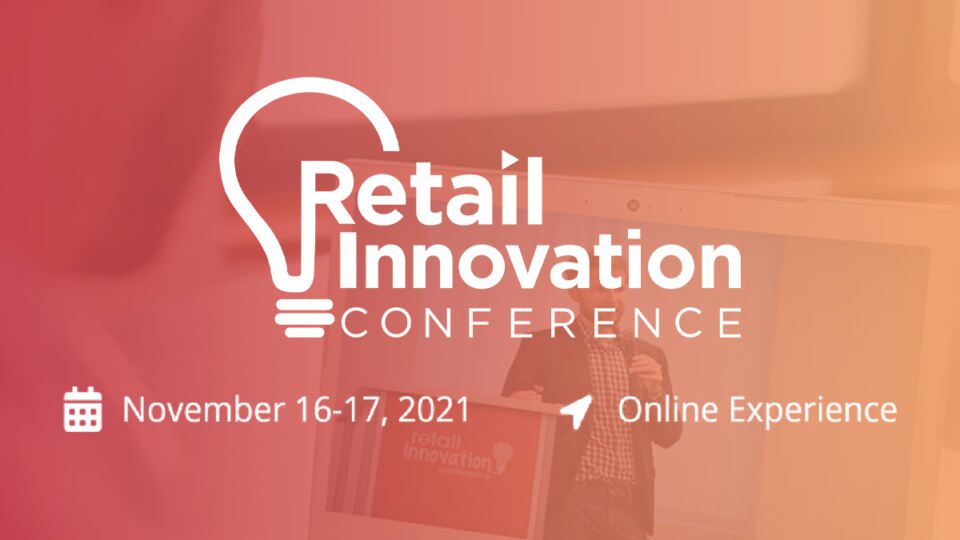It’s the question every retailer wants the answer to: what do consumers (and more specifically, those likely to buy their products) really want? Opening day of the 2021 virtual Retail Innovation Conference, which continues today, Nov. 17 with more great sessions, provided valuable insights into the mindset of today’s shoppers.
The day kicked off with a keynote presentation by Jeff Orschell, EY Americas Practice Leader: “Bottom line for retailers is that change is still happening, consumer behavior is still changing. You have to make sure you’re still listening to them, seeing what they’re going through and how they’re changing their shopping behaviors because we’re not done yet.”
Today’s consumers are seeking:
- Retailers that put omnichannel into practice, with seamless connections across offline, online, mobile and social channels;
- Convenience — curbside pickup is proving to be more than just a COVID-inspired solution to shuttered stores and contactless shopping;
- Brands and retailers committing to social issues, including sustainability, diversity and equity; and
- Two-way communication between brands and consumers that’s both personalized and community-based.
Consumers Want Retailers to Catch Up With Their Omnichannel Shopping Behaviors
“Omnichannel is so important for us right now as the retail industry, and all industries for that matter, are hit with supply chain issues,” said Aaron Veit, Director of Digital Product Management at Crate & Barrel. “We really want to give our customers the ability to shop where they want, how they want. Being able to let customers know which items are available in-stock in stores, which items are available for buy online, pick up in-store, which items can be shipped from a store — being able to serve up these types of opportunities to our customers is really key for us.”
Livestreaming is a rapidly growing practice to help omnichannel brands create a deeper connection with consumers in online ecosystems. In China alone, livestreaming sales were estimated at $66 billion in 2019 and $160 billion in 2020, and are projected to reach $300 billion in 2021, according to Bryan Amaral, Founder and CEO of Clientricity. The U.S. is behind but growing rapidly: live shopping is expected to reach $11 billion this year and could grow to between $25 and $35 billion by 2023.
“Our conversion rate is 50% higher in cities where we have stores; we can see that [online and stores] are working together,” Ariel Kaye, Founder and CEO of Parachute Home. “People come into the stores and then they feel more comfortable buying online. When our stores had to close for four months, some of the demand went online, but there also were very high-intent customers who waited until they reopened so they could touch and feel our products.”
Consumers Embrace the Convenience of Curbside Pickup
“Walmart has phased out its [in-store] pickup towers, noting that customers want one place to pick up their items, and that’s curbside,” said Bob Hoyler, Research Consultant at Euromonitor International. “Many retailers can afford to offer [curbside pickup] without outsourcing it to a third-party service, and it’s particularly well-suited to suburban and rural areas. The population of counties classified as ‘suburban’ grew at a faster rate than both urban and rural counties, even before COVID.”
Hoyler noted that:
- 94% of U.S. households possess a passenger vehicle;
- 32% of U.S. consumers rarely or never go shopping as a leisure activity;
- A Shopify survey of North American consumers revealed that 40% used a curbside pickup service during COVID, and nearly as many — 38% — plan to continue using these services even after the pandemic passes.
Consumers Want Brands to Show Their Commitment to Social Issues
“Inclusivity in the way people market — inclusivity in body and race — has definitely evolved over the past couple of years, and we’ve been early and proud in reflecting this,” said Ranjan Roy, VP of Strategy at Adore Me. “Our tagline is ‘here for it,’ which means we’re here for women — whatever they want to do in our lingerie, whatever styles they’re looking for and whatever ways they want to shop.”
EY’s Jeff Orschell revealed multiple ways consumers are trying to live more sustainably, with data derived from the research company’s EY Future Consumer Index:
- 85% try to conserve energy;
- 80% try to conserve water;
- 76% recycle or reuse packaging;
- 67% bring reusable shopping bags; and
- 59% reduce emissions.
Additionally, Orschell warned that a significant group of consumers don’t just expect companies to embrace sustainability — they will take action if they don’t do so:
- 31% of consumers will not purchase their products again;
- 31% of consumers will purchase fewer of their products; and
- 24% will tell family and friends not to use the organization.
Consumers Prize Community and Two-Way, Real-Time Communications with Brands
The interactive, authentic nature of the TikTok platform is continuing to draw in consumers, especially younger ones; the platform now boasts 1 billion users worldwide and counting. “We have seen users turn to TikTok because we’re really the only platform where you can come together as a community,” said Matt Cleary, Vertical Director of Retail & Restaurants at TikTok. “Just look at the creativity that is generated by this opportunity to co-create and co-experience content. Our community naturally is very inclusive, and so [our users] expect brands to be the same way. They like it when brands come unpolished or show a side that’s a little bit different. We actually found that a little over half of our users and over two-thirds of our creators feel closer to brands on TikTok when they publish human or unpolished content.”
“Given two brands with exactly the same product, people tend to buy from the one that they feel connected to,” said Rose Hamilton, CEO, Compass Rose Ventures. “Define your brand values. Identify causes you relate to and have a clear brand voice. Know what your customers’ deepest areas of vulnerability are and create a safe space to cater to their needs, and foster connections and support beyond the products. Look at their lifestyle. Where can you add value and make their lives easier?”
Register (for free) for more great RIC 2021 sessions here.













